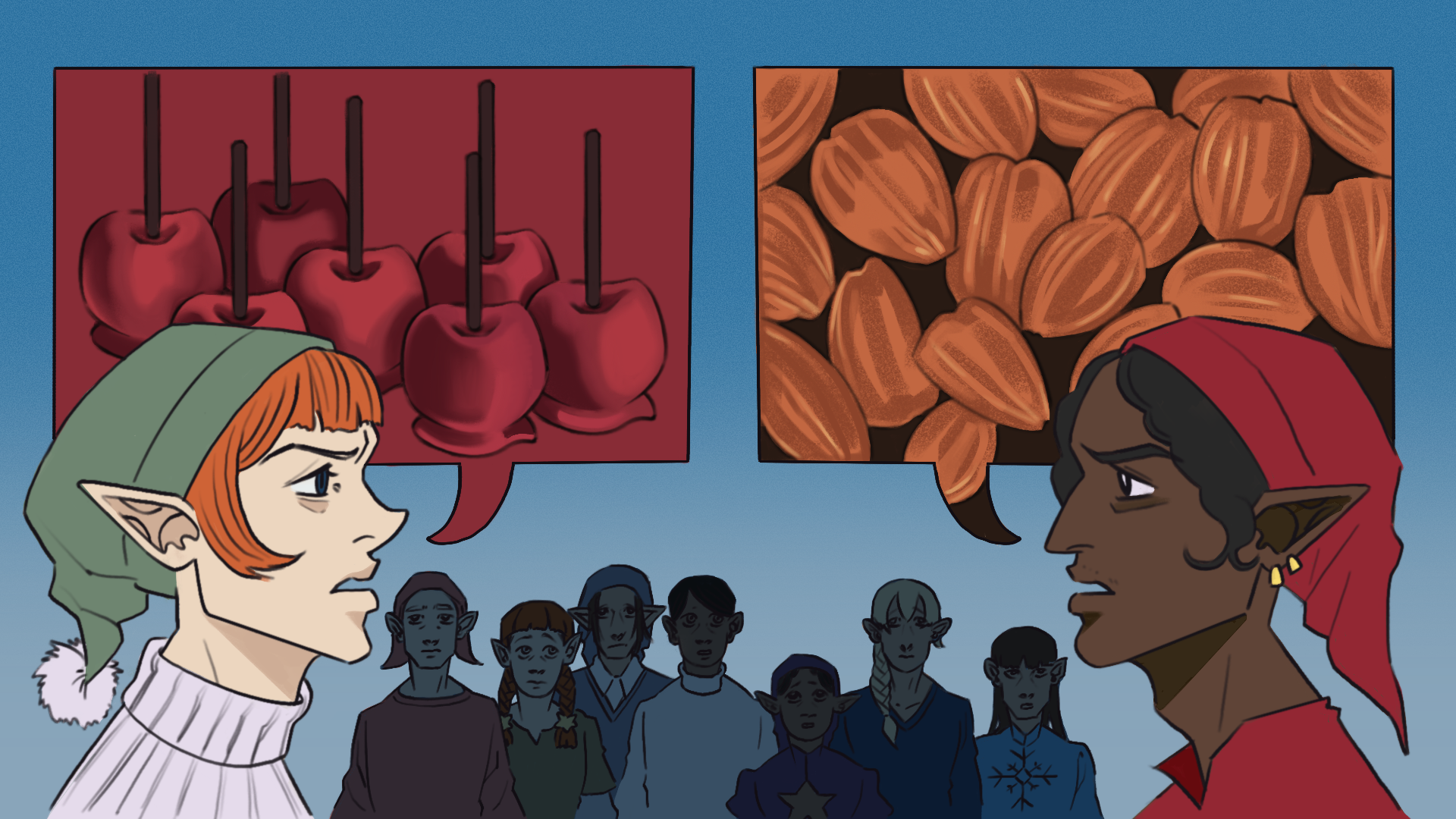
© Julia Nurit Schönnagel, MATH+
Latest Update (including PDF): Decmeber 21, 2:15 pm, change of possible answers 3, 5 and 9.
Author: Sören Nagel (ZIB)
Project: EF 45-1
Challenge
It is the night before Christmas, and Santa’s elves are busily working on producing gifts. While they work, they discuss which Christmas market they should visit together after their shift. The decision is not easy:
- Christmas Market M is famous for its roasted almonds.
- Christmas Market A is known for its candied apples.
Nine elves are seated in a row, and each has a preference for one of the markets. However, some of them have a strong, unchangeable opinion, while others are undecided and influenced by their neighbors. Here’s the situation:
- Elf Max sits far left (on the first chair) and is a devoted fan of roasted almonds. He will never change his opinion.
- Elf Anna sits far right (on the last chair) and is equally steadfast in her love for candied apples.
The elves in between (elves 2 to 8) have no fixed opinions and adjust their preference based on their neighbors. Initially, their preferences are randomly assigned to either roasted almonds or candied apples.
Each round, one of the undecided elves from positions 2 to 8 is chosen randomly. This elf, in turn, randomly selects one of their two direct neighbors and adopts their opinion. The next round then begins, where another randomly selected undecided elf from positions 2 to 8 adopts the preference of one of their neighbors.
The first question is:
(1) What is the probability that, after a very long discussion, the majority of elves will decide in favor of roasted almonds?
In the following year, Max wants to influence the group’s decision-making process more effectively but still has no allies supporting roasted almonds. To increase his influence, he decides to move two spots over to the third position by swapping places with the undecided elf who was previously there. Although Max now has a more central position, he is still the only steadfast supporter of roasted almonds, and Anna, still sitting far right, remains convinced to visit Christmas Market A.
The second question is:
(2) After Max’s change of position, what is the probability that the majority of elves will decide in favor of roasted almonds after a very long discussion?
The answer is rounded to three decimal places.
Mathematically, the probability stabilizes in the sense that it no longer changes. Discussions may only stop once the probability has stabilized.
Hint: It can be assumed that the stabilized probability that an undecided elf chooses roasted almonds or candied apples depends linearly on their position between the stubborn elves Max and Anna.
For example, if there were only 4 elves and we number Max as 0 and Anna as 3, the stabilized probabilities for apples, which Anna wants, would be as follows:
- Elf 0 (Max): \frac{0}{3} = 0 ,
- Elf 1 (undecided): \frac{1}{3} ,
- Elf 2 (undecided): \frac{2}{3} ,
- Elf 3 (Anna): \frac{3}{3} = 1 .
Possible Answers:
1. 0 and 0
2. 0 and 0.153
3. 0.3 and 0.666
4. 0.5 and 0.153
5. 0.5 and 0.666
6. 0.5 and 0.75
7. 0.5 and 0.85
8. 1 and 0.153
9. 1 and 0.666
10. 1 and 0.866
Project Reference:
This puzzle examines how position and influence affect consensus formation in groups with a mix of determined and undecided members. It serves as an illustrative example of the close connection between network structure and dynamics. The position of actors within an interaction network, as well as their interactions, can determine their influence, and both are essential components in the dissemination of information in social networks or the spread of innovations along ancient and modern road or trade networks.